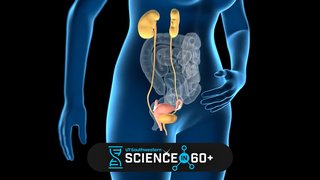What’s going on with my uterus? 3 conditions related to pelvic pain and bleeding
March 26, 2025

Too many times I’ve seen women ignore abnormal bleeding or pelvic pain because they think it’s “normal.” In reality, these symptoms can be signs of abnormal cell growth in the uterus, also known as the “womb,” a major female reproductive organ.
The uterus contains various types of cells to help women carry a baby. When cells grow abnormally, three common – and sometimes painful – conditions can arise:
- Uterine Fibroids (the most common)
- Uterine polyps
- Adenomyosis
Each condition causes symptoms that can negatively impact women’s quality of life, such as pain, abnormal bleeding, and fertility issues. However, treatment is available through medication or surgery, depending on a woman’s specific needs.
Treatment Options for Three Common Uterine Conditions
1. Fibroids
Fibroids are benign tumors made of smooth muscle of the wall of the uterus and can range in size from a grain of rice to a watermelon. They are very common – up to 70 percent of Caucasians and 80 percent of African-Americans will have them by age 50.
Women who are of reproductive and premenopausal age are most likely to experience symptoms, which occur in about 30 percent of cases and can include:
- Abnormal menstrual bleeding (heavy periods or bleeding between periods)
- Constipation
- Urinary frequency
- Increase in abdominal size
- Pelvic pressure
- Abdominal or pelvic pain
- Painful intercourse
If left untreated, more serious problems can arise. For example, large fibroids can press on the other organs in the abdomen and pelvis, including bowels, bladder and blood vessels. The pressure can cause symptoms or silently cause harm, such as reducing the flow of urine from the kidneys or predisposing women to blood clots in the legs. Fibroids also can distort the uterine cavity, which could result in difficulty getting pregnant.
If women don’t have bothersome pelvic pressure or pain, we usually start with medication – birth control or progesterone hormones pills – to manage abnormal bleeding. Surgical treatment also is available to women whose symptoms don’t improve with medications or who are having more bulk related symptoms. Options can include:
- Endometrial ablation: A surgeon heats up and destroys the inside lining of the uterus. This can decrease the heavy bleeding associated with some fibroids. Pregnancy is not recommended after this procedure.
- Focused ultrasound (FUS): A doctor takes images of the uterus while the patient lies inside an MRI scanner equipped with an ultrasound transducer. The images are sent to the surgeon to pinpoint the exact location of the fibroids while the ultrasound transducer sends sound waves to destroy the growths.
- Uterine fibroid embolization: An interventional radiologist implants tiny beads into the blood vessels that supply the uterus to cut off the blood supply, thereby causing the fibroid to shrink over weeks to months. Pregnancy is not recommended after this procedure.
- Laparoscopic ultrasound-guided radiofrequency ablation: This newer treatment involves very small incisions on the abdomen via laparoscopy to view the fibroid directly, then insertion of a small device into each fibroid to heat up and shrink the fibroids over weeks to months.
- Myomectomy: A surgeon removes the fibroids and reconstructs the uterus to preserve the organ. Depending on the number, size, and location of the fibroids, this can be done via the abdomen (frequently through a minimally invasive route) or via the vagina into the uterus.
- Hysterectomy: A surgeon removes the uterus through the vagina through small incisions in the abdomen or a larger incision on the abdomen.
A hysterectomy is usually reserved for when other treatments don’t work. It is the only treatment that provides certainty of no recurrence, but it does cause women to lose their ability to carry their own pregnancies.
"Too many times I’ve seen women ignore abnormal bleeding or pelvic pain because they think it’s “normal.” In reality, these symptoms can be signs of abnormal cell growth in the uterus, the main female reproductive organ."
– Kimberly Kho, M.D.
2. Endometrial polyps
Endometrial polyps are abnormal overgrowths of the cells that line the uterus and extend into the uterine cavity. The majority are benign, but cancer can be found in them too. Uterine polyps are rare in women younger than 20, typically affecting premenopausal and postmenopausal women. Women who are obese and those who take tamoxifen, a common drug prescribed after breast cancer, also are at increased risk of developing polyps.
Abnormal bleeding is the most common symptom, which can mean:
- Bleeding after menopause
- Bleeding between periods
- Bleeding after sex
- Overly-heavy periods
We can identify polyps through transvaginal ultrasound, which entails placing a small device in the vagina that emits sound waves, creating an image of the uterus and showing us the growths. Alternatively, we can use hysteroscopy, which involves placing a small, thin camera into the uterus so we can look for polyps. Removing symptomatic polyps generally is recommended to treat the problems and diagnose any concerning cells. The surgeon will use a small, thin instrument and a hysteroscope to identify and remove polyps with little to no pain.
3. Adenomyosis
Adenomyosis is the enlargement of the uterus due to tissue that normally lines the uterus growing into the muscular wall of the organ. The cause of adenomyosis is unknown, but we usually see it in women in their later reproductive years. In the past, researchers have estimated that 20 percent of women develop adenomyosis. An exact percentage has not been determined, however, because a definitive diagnosis can be made only by microscopic examination of the uterus following a hysterectomy.
Symptoms of adenomyosis can include:
- Heavy bleeding
- Pain during periods
- Pain during sex
- Pelvic pressure or bulkiness
Treatment options include hormone medications, such as birth control pills, progesterone, or intrauterine devices (IUDs). Endometrial ablation is an effective surgical option, or a hysterectomy might be recommended if medication doesn’t work.
Leading Experts in Pelvic Pain and Bleeding Treatment
At UT Southwestern, we customize treatment to each patient’s needs, including offering medication or minimally invasive treatments whenever possible. This allows patients to avoid undergoing open surgeries, which are more extensive and require longer recovery times.
Women shouldn’t hesitate to visit a doctor if they experience abnormal bleeding or pelvic pain. Fighting through symptoms is unnecessary – especially with the wide variety of ways to diagnose and treat the conditions. To find out what treatment is best for you, call 214-645-8300 or request an appointment online.










